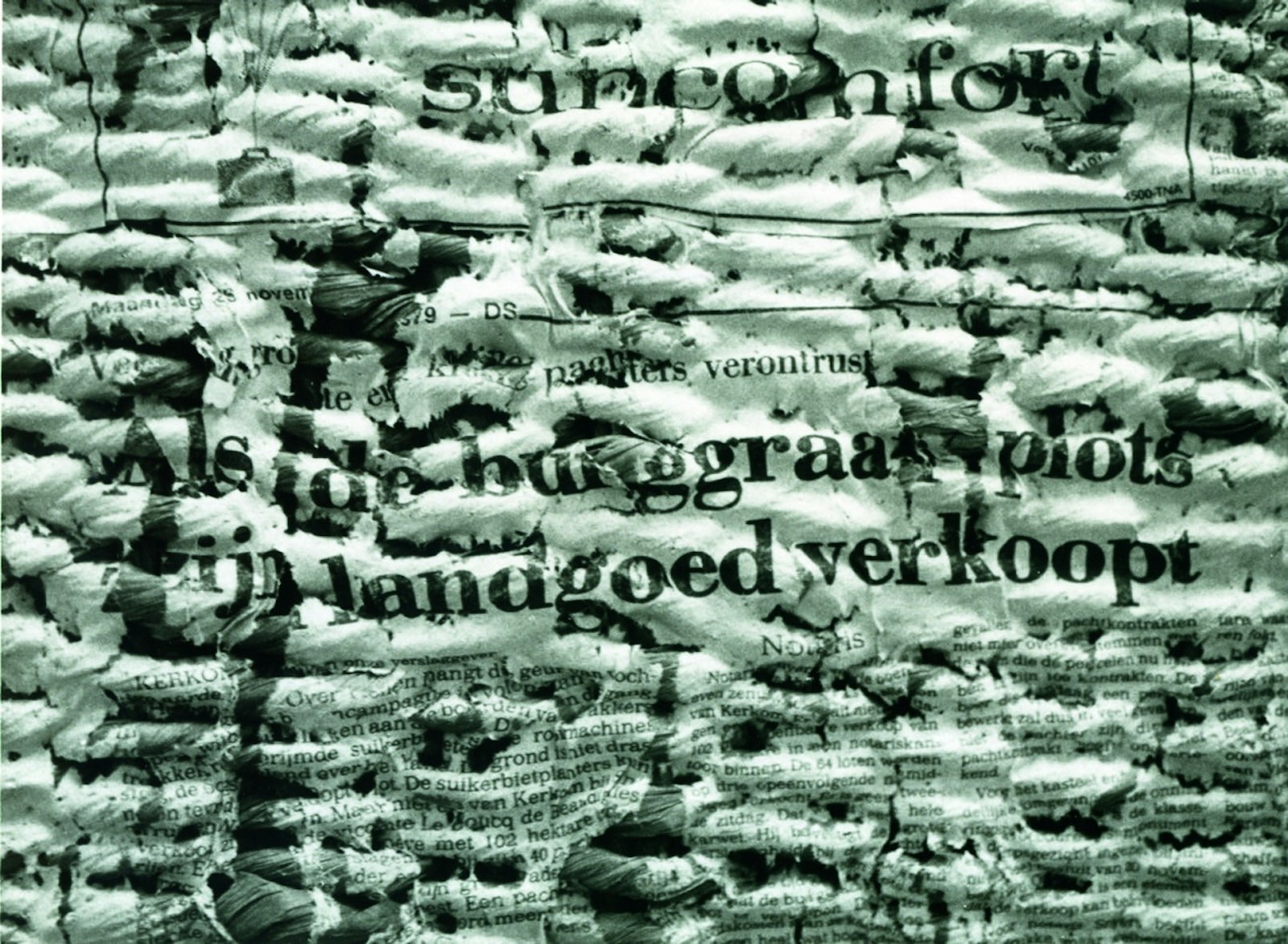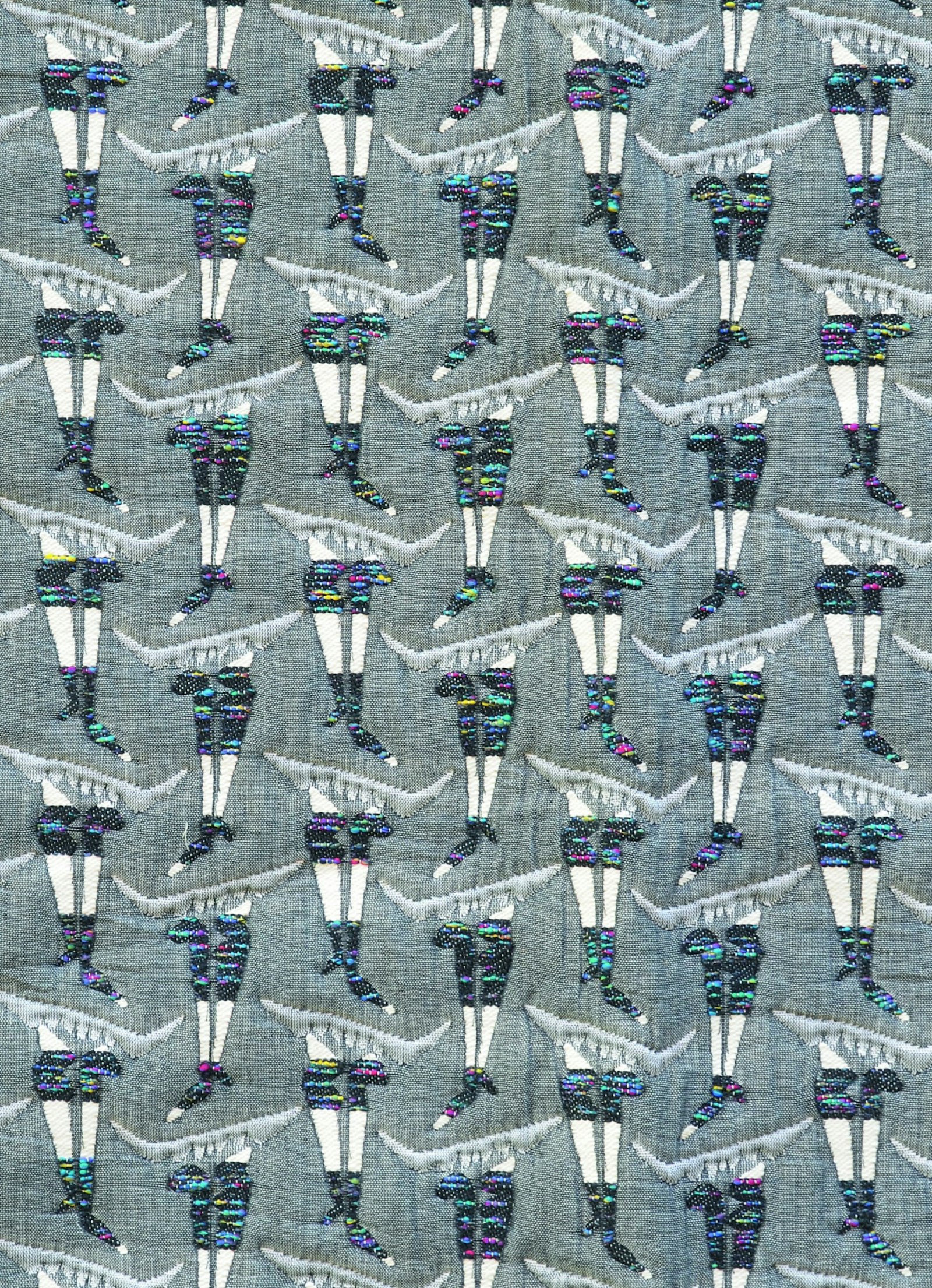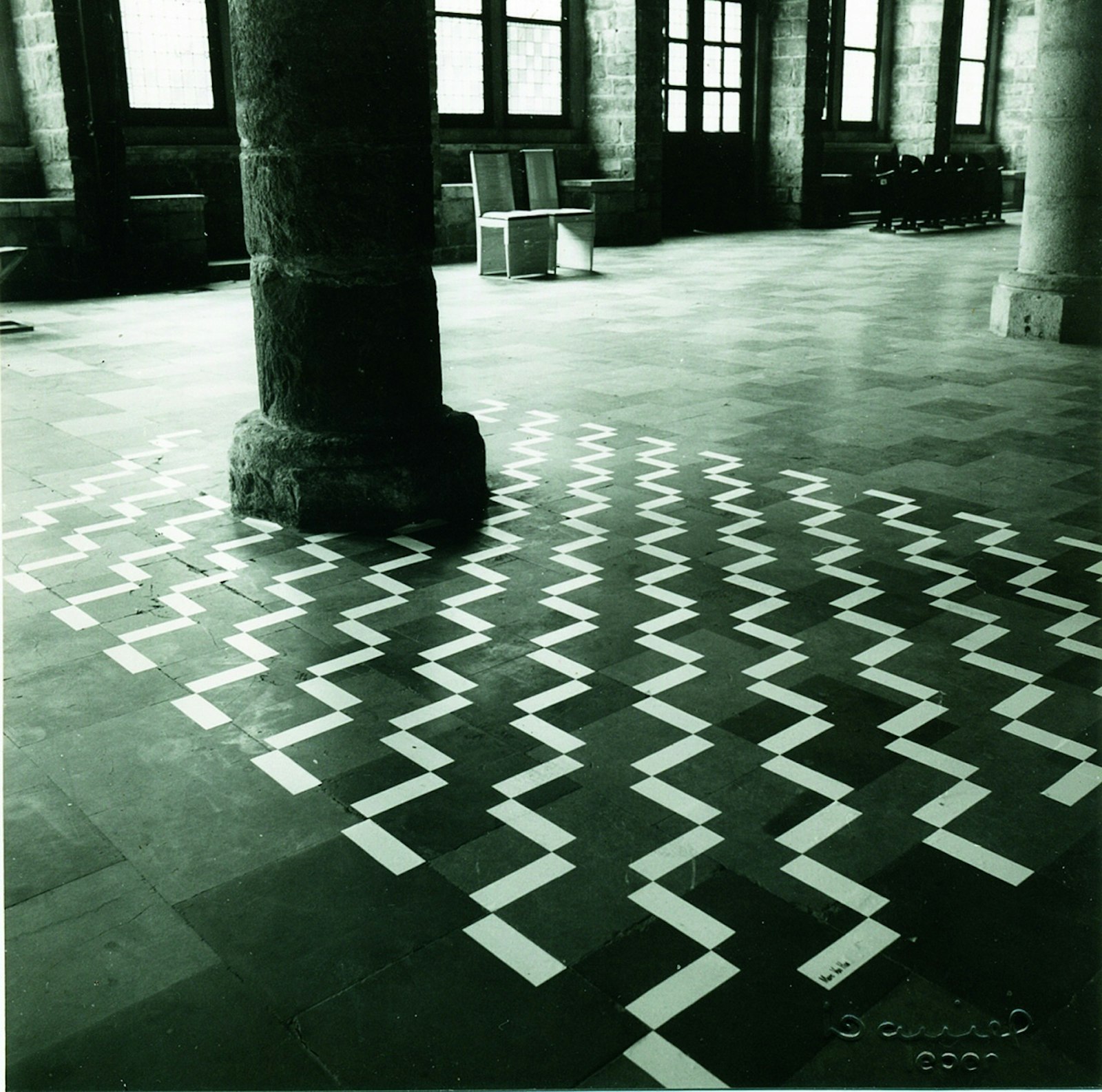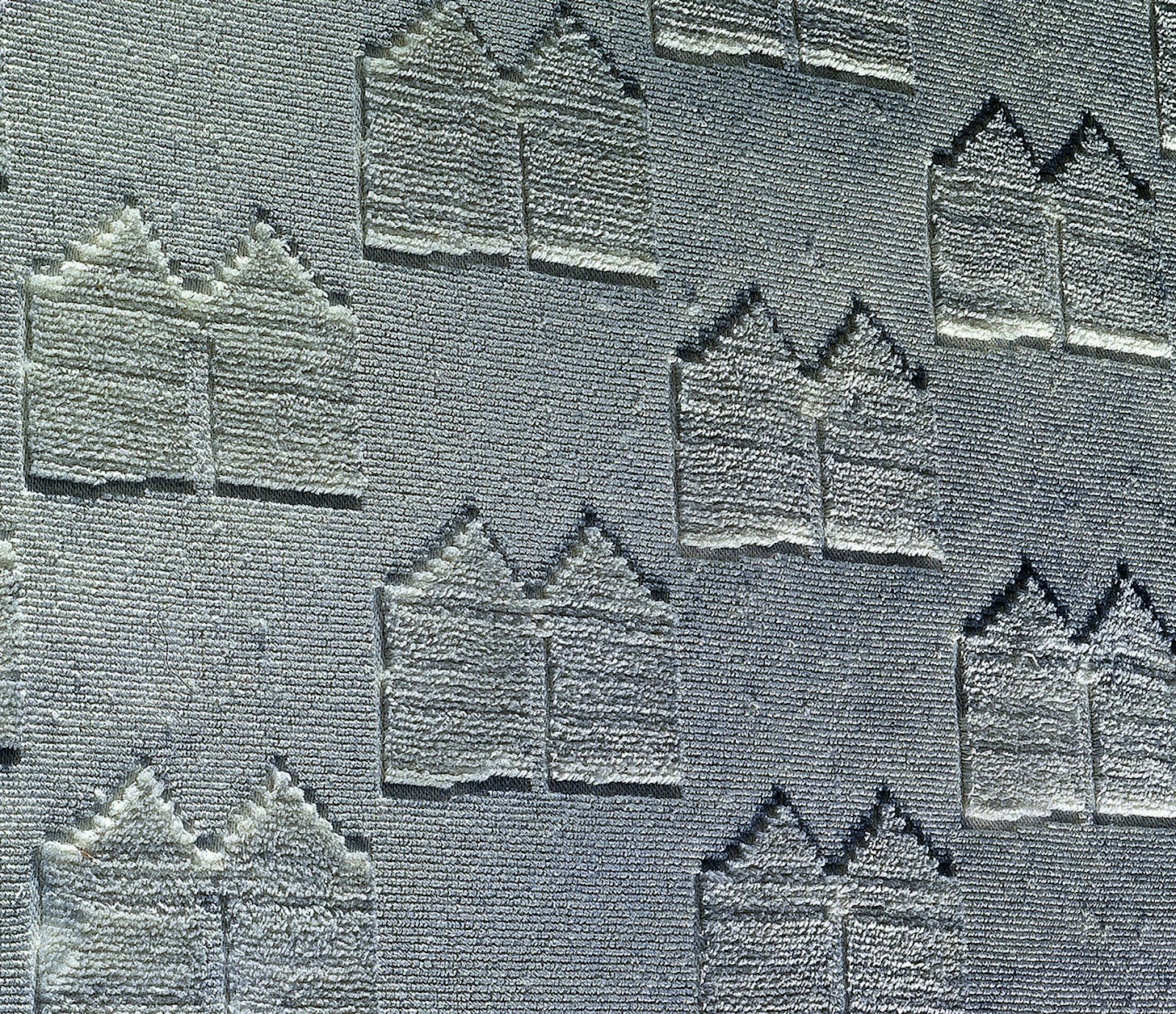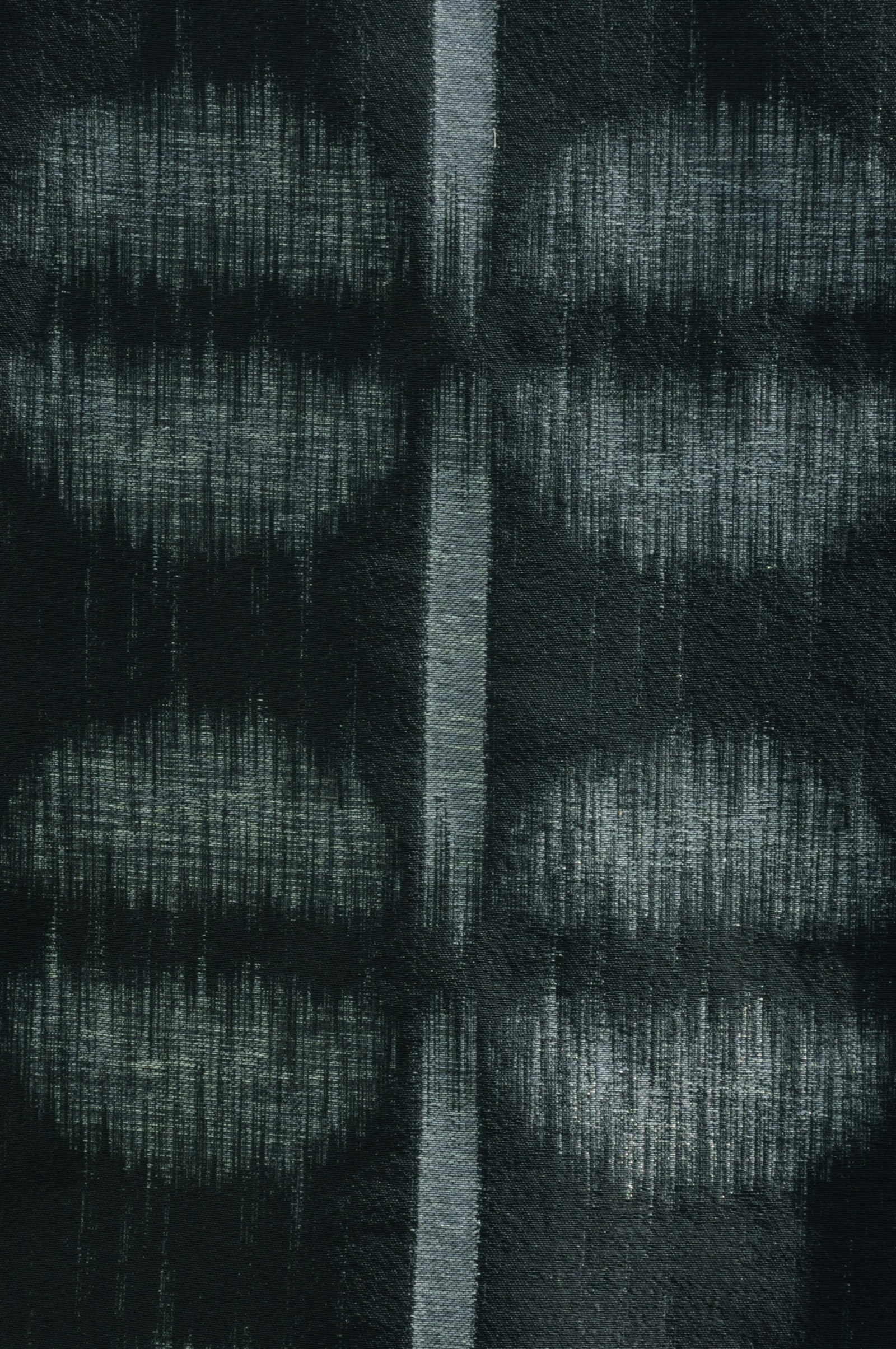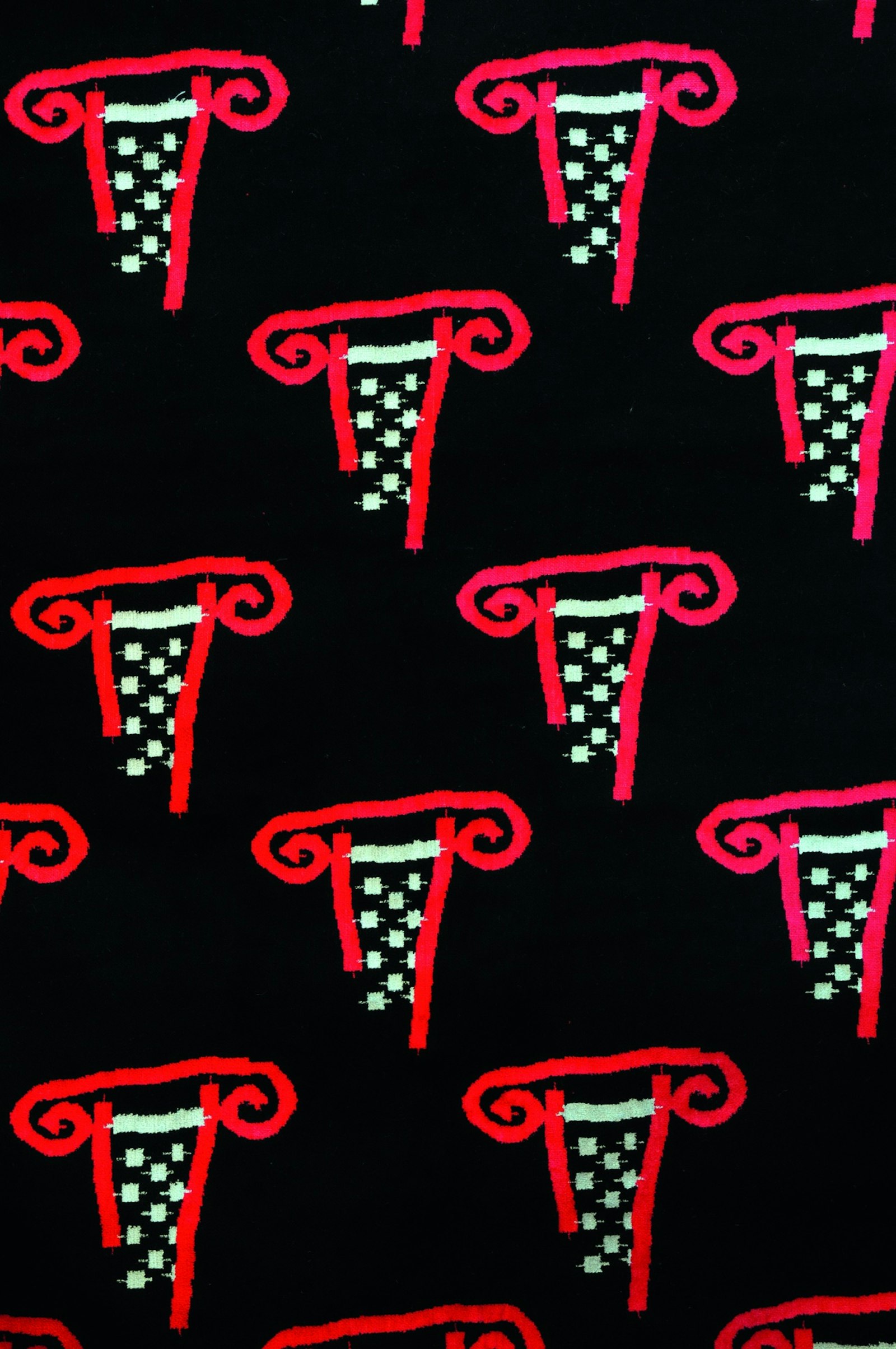By seeking out and collecting old textiles and applying the knowledge thus gained in contemporary fabrics, Marc has become a significant and versatile representative of this. The connections he makes between craftsmanship, visual art and design are fascinating and magnificent, and this makes him a designer, an artist, a collector, a seeker and a thinker who richly deserves to win a Henry van de Velde Award.
de Velde
Marc Van Hoe
Marc Van Hoe, master 'Textilian'
'Textilian' is a bit like the word ‘filmeur’ in Belgian French which Marc Didden uses to express the idea of the true filmmaker, or the word ‘Flandrien’ in Belgian French which calls to mind a tough, veteran cyclist. Both words convey the notion of an unequalled personality, whose work is without affectation and who pursues the essence of his discipline. Van Hoe is just such an authentic figure in the art of textiles.
‘I really mustn’t shake off the Flemish clay,’ he tells me with a smile in our interview on 5 November 2010. His insights come out of two worlds. The first is craft, the second art. He shows me two books that have had influenced him profoundly: ‘Spurensicherung’ (1977) on the study of the (re)constructed image via contemporary art, and ‘Nieuwe vormgeving in weven’ (1973) on new designs in weaving. But we shouldn’t take this notion of craftsmanship too literally. Marc is not so much the weaver as the draftsman, the designer, the cardboard maker. It was not until later that he learned the ‘craft’ of weaving, and to apply investigation and experiment, through training periods in the De Saedeleer Studio in 1974 and 1975, and under Pierre Daquin in 1976 (see below). The craftsmanship is just there in the background, as a part of his life. ‘The Flanders of the past was the China of today,’ he says, ‘It was the English, at first, who brought textile production to Flanders. After WWII, the Flemings decided, with the flax industry waning, to set up looms in the free work sheds. And, with that, we gave birth to our own specific branch: that of world-renowned cut and uncut velvet.
These days, large-scale production is disappearing, despite the existence in Flanders of excellent producers and skilled workers. Unfortunately enough, there are no local ‘editeurs’, or distributors, to bring a collection to market for interior architects or decorators. There is enough interesting work for designers, but little influence because large series are gradually being produced at outplacement locations.’
For more on his history, I refer attentive readers to the beautiful book on Van Hoe published by Design Flanders in association with Stichting Kunstboek, entitled: ‘Marc Van Hoe, eigenzinnig grammaticus van materiaal- en beeldtaal.’[Marc Van Hoe, Maverick Grammarian of the Language of Materials and Image]. We consulted Mireille Houtzager, the Netherlands’ greatest textiles expert, as an author, which was a fortunate choice, given the very beautiful essay she wrote on this designer/artist. But, I would like to very briefly sketch out a history of Marc Van Hoe for the casual reader.
Marc was born on 23 October 1945 in the municipality of Zulte in East Flanders. This municipality lies in the flax growing region, through which the Golden River runs, the river Lys, the waters of which were known for centuries to be perfect for rotting flax. His grandmother was a painters’ model in her youth and his grandfather a true craftsman who also painted. They would regularly have artists in their home. Since Marc lived with his grandparents for a long time, textiles and art came into his life at a very young age. This combination would influence his work for a very long time, in fact to this day.
At the age of 12, he signed up for a course in general textiles at the Provincial Technical Institute in Kortrijk, and, at 15, he took textile design at the same institute. He also went to classes at the Royal Academy of Fine Arts in the same town to study ‘Graphic Design in Advertising’. He was taught by Boudewijn Delaere (1938), a top graphic designer, who opened the world to him. In May of 1968, a rather special moment, he married Veerle Rouquart, who was following a course in textile drawing at the same institute and went on to study tapestry at the Art Academy in Tournai. They became a textile couple, a design duo, which, through the most hectic period, i.e. starting an independent career and caring for four children, remained complementary yet close-knit.
After graduating, Marc worked for a number of weaving mills, where he became familiar with the velvet industry, and in 1971 fell under the spell of the visual arts. They went together that year to Lausanne in Switzerland, where the Tapestry Biennial is held. ‘It is the Biennial year in which the young, new Japanese textile artists first show their work in Western Europe. The impression that this makes on Marc Van Hoe is enormous…’ (to quote freely from Mireille Houtzager, page 10, ‘Marc Van Hoe’, Oostkamp, 2010). Later he meets Pierre Daquin (France, 1935), who holds workshops ‘in which people experiment with modern tapestry techniques’ (Mireille Houtzager, idem, page 10). ‘They have a lot to tell each other, and much to learn from each other in the togetherness of experimentation’, writes Mireille on page 11 of her essay on Marc.
Image, form and materiality become characteristic of his work. In 1977, Van Hoe goes solo, and, in 1979, he and Veerle decide to set up their own industrial textile and visual art studio, by the name of ‘Tekstielateljee’. I myself got to know Marc a little later, in 1978-79, when he too was teaching at the Academy in Kortrijk. Marc came into my field of view through Hilde D’Haeseleer, a friend and former colleague of mine, who specialised in contemporary textile art. I remember it well. The man bubbled with enthusiasm for textile art, and, to our pleasant surprise, was extremely well informed about contemporary art. Our paths crossed time and again after that.
The ‘Textile Structures’ exhibitions in 1980 and 1982, organised by Marc, were groundbreaking and later, through our collaborations, came the ‘Vehta biennials’ on contemporary textile art. ‘However, textile art is gone entirely, absorbed by art, has joined the visual arts and, fortunately, is no longer solely dependent on material, discipline or gender, as is the case with all other discipline or material-related forms of art,’ explains Marc, ‘and yet it is strange that textiles (textile art) are given little or no attention today. Modern architecture is the perfect décor for it, there is a whole world to be discovered and designed.’
Marc Van Hoe was introduced to the textile computer in the 1980s, through the Instituut Textiel en Confectie België (ITCB) [Institute for Belgian Textiles and Fashion]. Whereas he had previously drawn on card, the Institute had computers and plotters on which textile designs could be made in a completely innovative way. Back then, you had to wait a day/night before a print was ready, which was next to no time compared with before, when the ‘card drawing’ had to be coloured in line by line and pixel by pixel with a flattened brush. ‘In 1986, Marc is one of the five participants in a pilot project commissioned by this organisation (…) He throws himself into computer technology without hesitation (...) Ter Molst International, one of the select weaving mills, chooses Marc Van Hoe as its designer’ (see Mireille Houtzager, page 34, 2010). The experiment turns out to be a success.
Van Hoe designed for the Jacquard loom, among others, because you could create images with it, paint with textiles as it were, use colour and structure and tell a story. Nonetheless, as a visual artist, he worked more spatially. His selection, in 1981, for the 10th Lausanne Biennial, the Mecca for textile designers around the world until the end of the 1990s, was a telling example of this, as were his selections for the miniature textile biennials in London and Szombathely in Hungary. He also set up the artists’ group AoRTa, which designed a few installations in which textiles always set the tone, either through association or through use of materials. He taught at the Academy of Visual Arts and Design in Tilburg, where he was highly valued, and left in 1990, but returned in 1992 to head an interior textile project for the American aircraft manufacturer, Boeing.
In the ten years between 1986 and 1996, he was given several mentions in the ‘The International Design Yearbook’, a reference book for designers of that period. He has designed quite a few memorable fabrics, such as the Ballerina of Gevallen Engel [Ballerina or Fallen Angel] in 1988 and Man with 3 heads in 1994. This was the year in which Design Flanders (then still the Design Department of the VIZO) organised its 1st Triennial, an exhibition that revealed the traditional crafts roots of contemporary design. This is a vision that rests on the theory of the 19th century Arts & Crafts movement in England.

